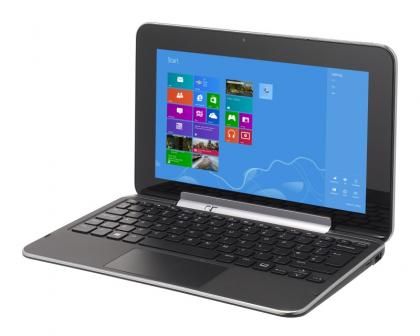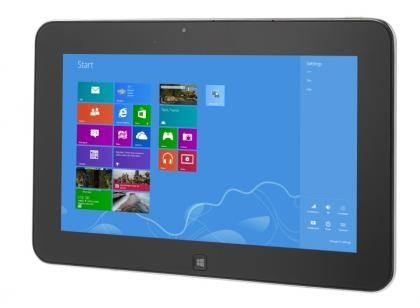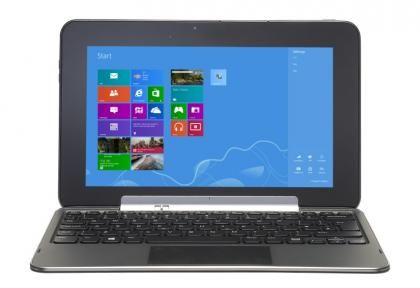The XPS 10 is Dell's first Windows RT tablet. It's a 10.1in slate with accompanying keyboard dock that turns it into a miniature laptop when you need more than a touchscreen. It's available without the dock, but as we'll explain this is the most impressive version.
Built from a combination of plastic and soft-touch rubber, the tablet doesn’t feel as high a quality as the all-metal Microsoft Surface RT . There’s a fair amount of flex at the rear of the unit and the plastic cover that protects the microSD card slot feels flimsy, which isn’t what you expect from a tablet that costs the same as an iPad.

Apart from the power button on top and the 3.5mm headphone jack on the side, the only ports on the tablet are a Micro USB port and a proprietary docking connector that can double as a HDMI output if you use the bundled adaptor. The tablet alone then lacks a USB port for connecting other devices, something that the Surface RT does have. Its microSD card slot only supports up to 32GB of additional memory too, while the Surface RT's Micro SDXC slot can give you 64GB (for a reasonable £35) or even more if desired.

Its 10.1in, 1,366x768 touchscreen dominates the tablet and its chunky black bezel leaves plenty of room to rest your fingers and thumbs. It uses an IPS panel, so viewing angles are unsurprisingly excellent and it produced vivid colours that made photos and videos look great; however, the same can be said of competing Windows RT devices. The capacitive touchscreen was very responsive, and although the default scaling sometimes made it difficult to navigate the Windows 8 desktop, it was far easier once we’d boosted it to 125 per cent. Naturally, the Modern user interface is ideally suited to a touchscreen, and we had no trouble using it.

Microsoft’s touchscreen keyboard is perfectly usable for entering web addresses or sending quick emails, but for more lengthy text entry you’ll want to connect the tablet to the keyboard dock. This adds a Chiclet-style QWERTY keyboard, an internal battery, two USB ports and a Mini HDMI port, turning the tablet into an ultra-portable laptop. The clip-in mechanism holds the tablet firmly in place and has a latch to stop you accidentally removing it when picking it up. It also folds flat into a clamshell, protecting the screen when on the move.

The keys are slightly smaller than full-size, and typing on them was a pleasant experience; more natural than using Microsoft's Surface Touch Cover and more comfortable than the Asus VivoTab RT . Each key has a reasonable amount of travel except for the space bar, which feels flat and has very little feedback.
There’s also a touchpad built into the dock, with integrated buttons with good feedback. The touchpad is well sized for a 10in device, matching its aspect ratio and letting you span the desktop completely in a single swipe - without having to pump up the sensitivity to unmanageable levels. If you're not a fan of the new Windows 8 Start Screen, then you'll have no problems running everything primarily from the desktop.











